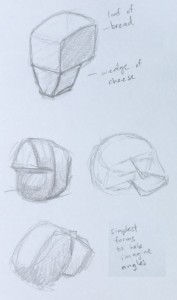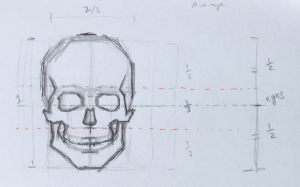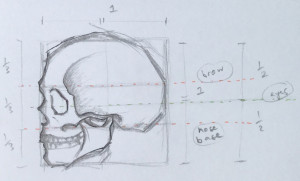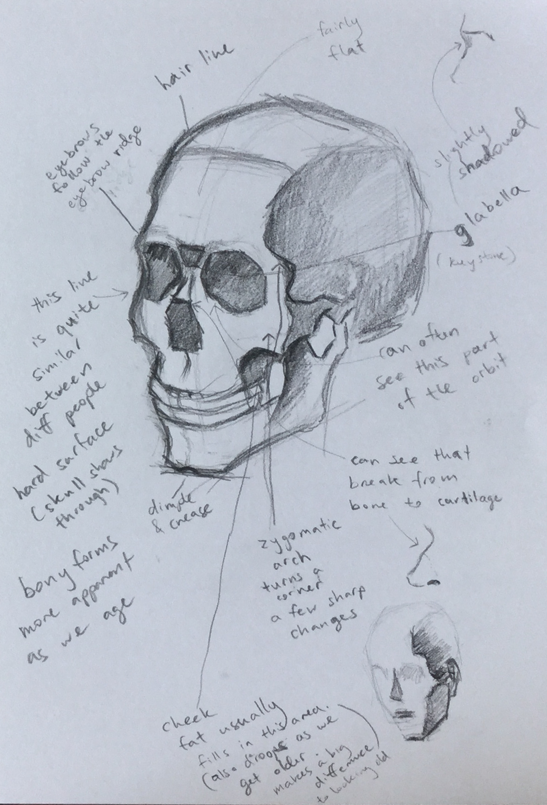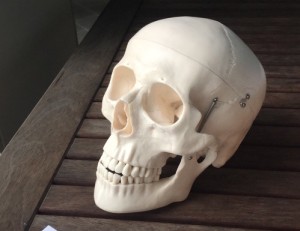- To understand the forms of the face, it helps to understand the underlying structure of the skull.
- Simplified, it looks like a loaf of bread + a wedge of cheese!
- The advantage of breaking it down into simple forms is to make it easier to visualise at varying angles.
- Rough guides on average proportions:
- Eye sockets about the halfway between top and bottom of the head.
- Eyebrow ridge at the top third.
- Base of nose at the bottom third.
- Most interesting for artists is probably how the forms of the skull relate to the forms of the face.
- Top half of the face has very little muscle/fat so the form is mostly determined by the bone:
- The relatively flat expanse of forehead.
- Eyebrow ridges that shade the eye sockets.
- The shadowed area between the brows (glabella)
- On some faces you can see part of the eye socket (usually that inner lower corner has a highlight).
- The Cheek bones which extend all the way up to the temples. There’s a significant change of plane/light there.
- The bottom half of the face is a lot more fleshy:
- The main bony structure visible is the jaw.
- The rest of the area is softened by fleshy cheeks.
- The nose is mostly fleshy but should note the bony bridge, especially the little break between where bone ends and cartilage begins.
- The mouth also follows the shape of the teeth quite closely. (I was so surprised when I saw old photos of my grandpa before he got false teeth, bottom half of his face looked totally different!)
Side note: I got this very nice replica skull off ebay. For a plastic skull it’s got a great level of detail and I’ve learnt a lot from being able to refer to it while sketching an actual face. Also being able to hold it and feel all the changing planes from a tactile point of view helps everything sink in.
